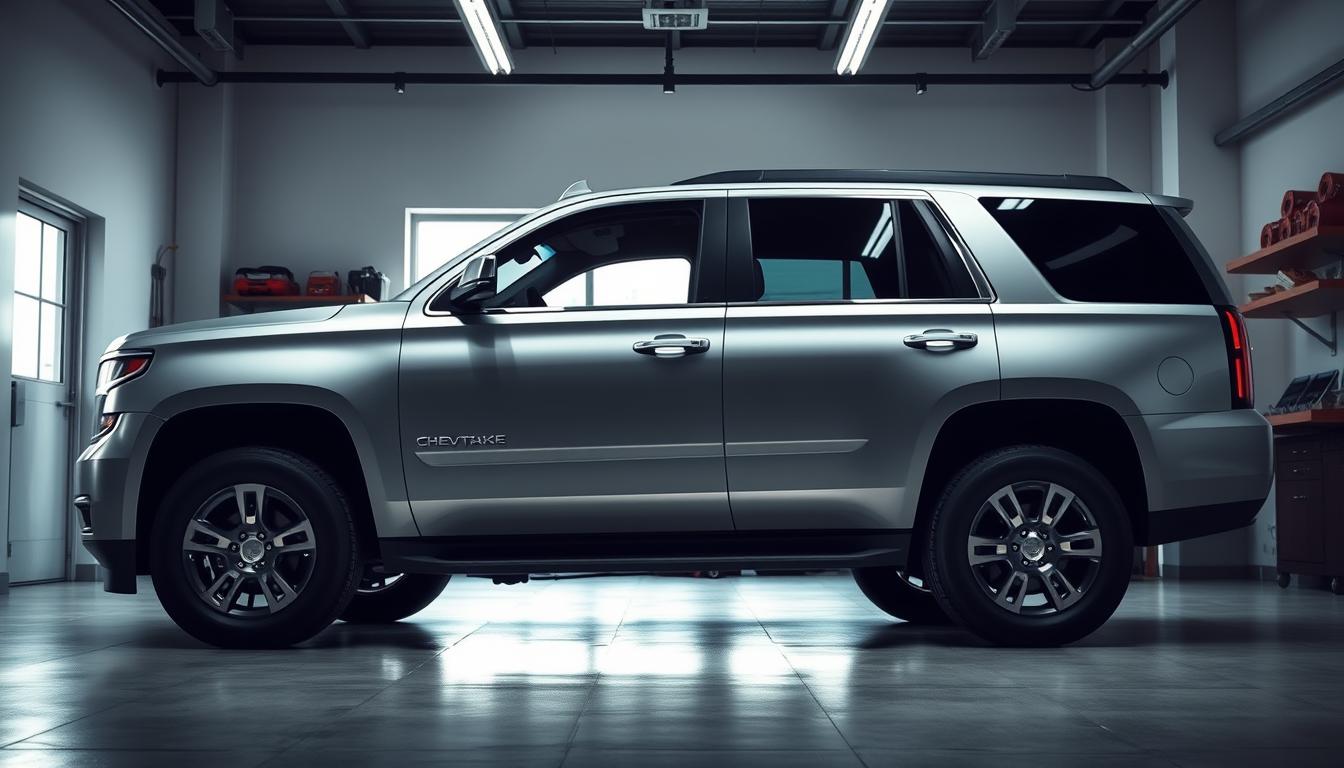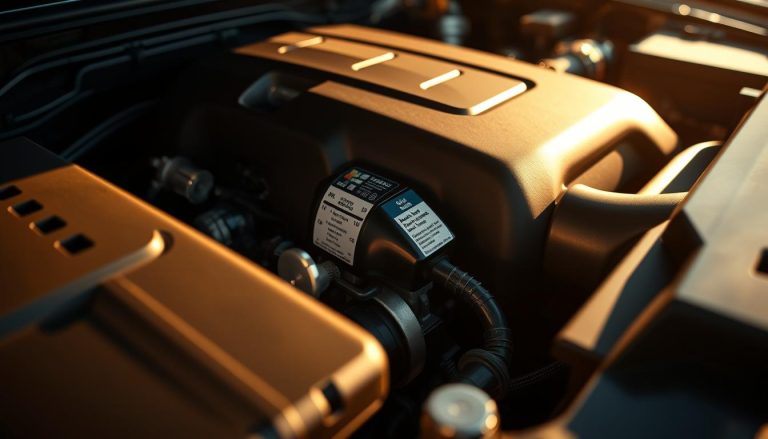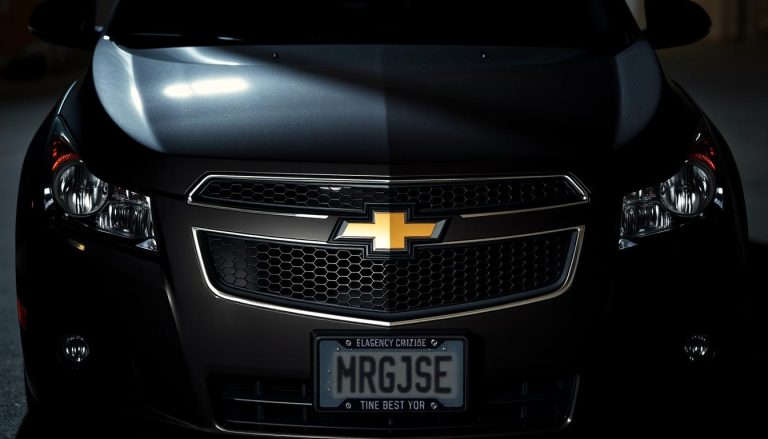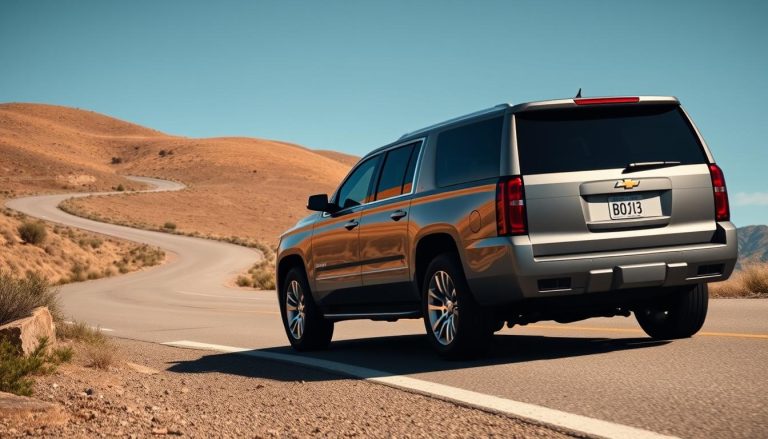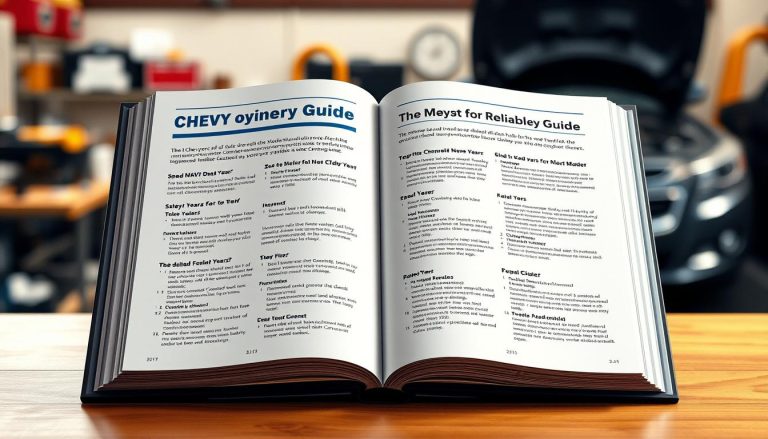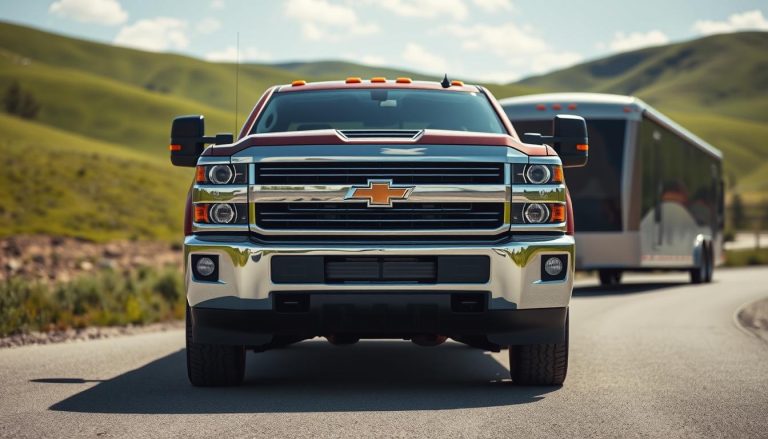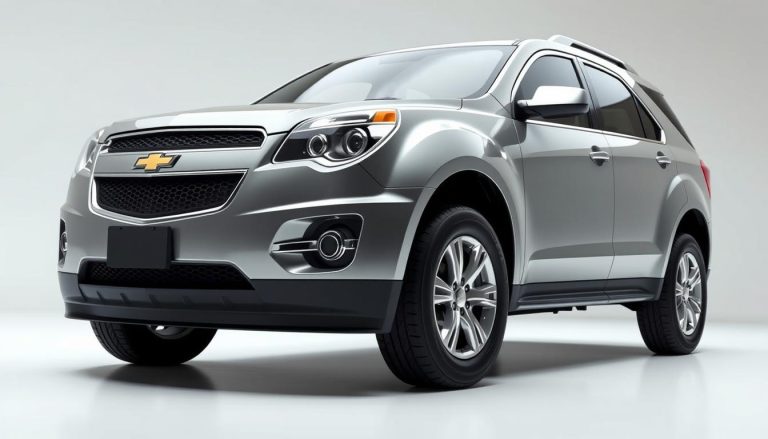Avoid These Chevy Tahoe Years: A Buyer’s Guide
Choosing the right model year is key when buying a vehicle. The Chevy Tahoe is a favorite SUV with many changes over the years. Yet, not all years are good choices. This guide highlights the Chevy Tahoe years to steer clear of. These years have reliability problems and many complaints. With this knowledge, you can pick a Tahoe that’s reliable and a good investment.
Understanding the Importance of Model Years
The year a Chevy Tahoe was made greatly affects its features, performance, and trustworthiness. By looking into different model years, buyers can choose wisely, knowing the vehicle’s reliability may change.
Why Model Year Matters
Every Chevy Tahoe model year comes with its own set of changes. These can range from updates in design to new tech features, and sometimes, unexpected problems. A recent model might boast a top-notch infotainment system. An older one could offer a different type of ride because of its suspension, affecting how smooth or durable it is.
How Manufacturing Changes Impact Reliability
Changes in how Tahoes are made play a big part in their reliability. As years go by, tweaks in how they’re built, the materials used, and where parts come from impact how long they last and perform. Big design or engineering changes can either solve old issues or bring new ones, shifting how people view certain Tahoe model years.
| Year | Key Manufacturing Changes | Impact on Reliability |
|---|---|---|
| 2015 | Introduction of stronger frames | Improved overall durability |
| 2018 | Enhanced electronic systems | Initial reliability issues but resolved in subsequent updates |
| 2021 | Major redesign with new engine options | Mixed reviews on long-term reliability |
Chevy Tahoe Overview
The Chevy Tahoe is a standout in the SUV world, offering both rugged power and everyday comfort. Exploring the Tahoe’s history and position in the market shows us how it has changed and stayed popular with buyers.
Brief History of the Chevy Tahoe
The story of the chevy tahoe starts in the mid-90s, with General Motors spotting a need for strong, large SUVs. Launched in 1995, the Tahoe took over from the Chevrolet Blazer. It filled a key spot in GM’s lineup, mixing the strength of a truck with the comfort of a car. Through the years, the Tahoe has gone through many updates, improving its technology, safety, and style. Features like the upscale LT and LTZ trims and new safety tech have made the Tahoe a top choice for families.
Popularity and Market Position
The Chevy Tahoe is a leader in the crowded SUV market. It wins over buyers with its big size, strong performance, and luxury touches. It’s often one of the top-selling SUVs, showing its strong position in the market. People from various walks of life love the Tahoe, from big families needing space to outdoor lovers and those who tow regularly. This versatility has kept the Tahoe at the top in the competitive world of SUVs.
Below is a table summarizing key aspects of the Chevy Tahoe’s market position:
| Aspect | Details |
|---|---|
| Launch Year | 1995 |
| Generations | Five |
| Key Market Segments | Families, Off-Road Enthusiasts, Towing Needs |
| Top Rivals | Ford Expedition, GMC Yukon, Nissan Armada |
| Sales Highlights | Consistently high rankings in full-sized SUV sales |
Chevy Tahoe Years to Avoid
It’s important to know the chevy tahoe years to avoid if you’re thinking about buying one. We will look at specific problems and what customers have said. This gives a full view.
Common Issues in Problematic Years
Some problematic vehicle years of the Chevy Tahoe have serious flaws. For example, their transmissions often break down too soon. This can be both annoying and costly.
Also, these models might use too much oil because of engine issues. This means you’ll spend more on upkeep. Lastly, they often have electrical problems, like bad sensors and wiring troubles. So, it’s smart to check the car well before buying it.
Owner and Consumer Reports
Consumer feedback is key to finding problematic vehicle years. People who have had these cars share their bad experiences. For instance, many say the 2007 and 2008 models often break down. Also, the 2015 Tahoe is known for its electronic issues.
This feedback shows it’s wise to be careful with these Tahoe years.
Here is a table that sums up the trouble years and their issues based on consumer feedback:
| Model Year | Common Issues |
|---|---|
| 2007 | Transmission failures, engine problems |
| 2008 | Oil consumption, transmission issues |
| 2015 | Electrical malfunctions |
Common Reliability Issues in Chevy Tahoe
The Chevy Tahoe is loved by many for its space and power. But, some models have shown reliability problems that you should know about.
Engine Problems
Engine issues are a big problem in some chevy tahoe reliability issues models, especially from the early 2000s and mid-2010s. Look out for weird engine sounds, worse gas mileage, and sometimes, the engine might even stop working. Keeping up with regular checks and fixing problems early can help avoid these troubles.
Transmission Failures
Many Tahoe models have had transmission failures. People have had trouble changing gears, experienced delays, and heard odd noises. This is mainly in early 2000s and some 2015 models. Not fixing these transmission failures quickly can lead to big repair bills and affect how well the car drives.
Electrical Issues
Many Tahoe versions have electrical system malfunctions. Users often report issues with lights, the entertainment system, and electric locks not working right. These problems can make the car less safe and harder to use.
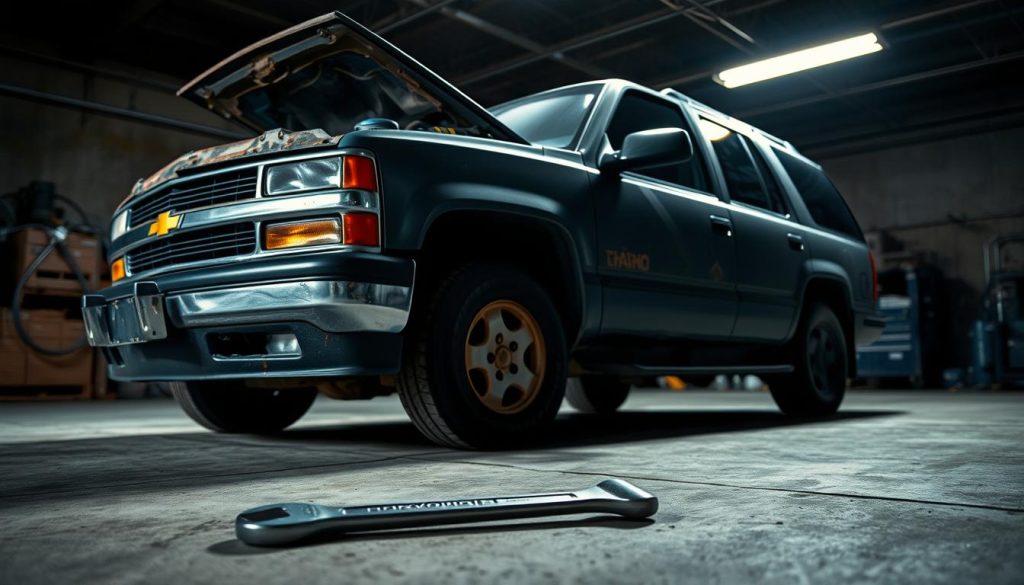
| Issue | Models Affected | Common Symptoms |
|---|---|---|
| Engine Problems | Early 2000s, Mid-2010s | Unusual noises, decreased fuel efficiency, engine failure |
| Transmission Failures | Early 2000s, 2015 | Problems with shifting gears, delayed response, strange noises |
| Electrical Issues | Various models | Lighting system problems, infotainment failures, electrical locks malfunction |
Evaluating Used Chevy Tahoes
Assessing used Chevy Tahoes requires detailed checks before buying. It’s key to conduct a thorough pre-purchase inspection and take a comprehensive test drive. These steps are vital to make sure you’re making a good investment. Here, we share tips on inspecting and driving to guide your decision.
Inspection Tips
A careful pre-purchase inspection can uncover any potential problems. Consider these important points:
- Exterior: Check the body for rust, dents, or paint color mismatches. These could show past accidents or repairs.
- Undercarriage: Look at the undercarriage for rust, leaks, and damage. Focus on the exhaust system, suspension, and fuel lines.
- Engine: Look for fluid leaks, overly dirty or corroded parts, and belt and hose wear. The engine should start smoothly, without odd noises.
- Interior: Check for lots of wear on seats, dashboard, and controls. Make sure all electronics work well.
- Service Records: Check the car’s maintenance history. Regular service and oil changes mean it’s been well cared for.
Test Drive Advice
Taking a test drive is key when checking used Chevy Tahoes. Here’s what to do for a good evaluation:
- Start-Up: Listen for strange sounds or delays when starting the engine.
- Handling: Drive on various roads. Notice how it handles turns, hills, and bumps. The steering should feel right and not vibrate too much.
- Braking: Make sure the brakes respond well and smoothly without strange noises or pulling to one side.
- Acceleration: The car should speed up smoothly. Check that it shifts gears well when you speed up or slow down.
- Comfort: Think about how comfortable the ride is, how the seats feel, and how much noise you hear inside the car.
Doing a thorough pre-purchase inspection and taking a good test drive can tell you a lot about the car’s condition. This helps you make a wise choice when buying.
Chevy Tahoe Model Years with Best Reliability
When looking for a used Chevy Tahoe, it’s vital to know which model years are the most reliable. These are the years that bring the most value and performance to buyers.
Standout Years to Consider
Some Chevy Tahoe models stand out for their reliability and performance. These models have fewer problems and are more dependable.
- 2015: Recognized for its improved electrical systems and more advanced safety features.
- 2016-2018: These model years saw notable upgrades in engine performance and fuel efficiency, contributing greatly to their reliability.
- 2020: Featuring the latest technology and comfort enhancements, the 2020 model year has consistently received positive reviews for its dependability.
Upgrades and Improvements Made
We’ll look at the upgrades that made these years stand out:
| Model Year | Key Upgrades | Impact on Reliability |
|---|---|---|
| 2015 | Updated electrical systems, enhanced safety features | Reduced electrical issues, improved safety ratings |
| 2016-2018 | Refined engine performance, better fuel efficiency | Lower engine troubles, cost-effective operation |
| 2020 | Advanced technological features, superior comfort | Higher owner satisfaction, increased vehicle dependability |
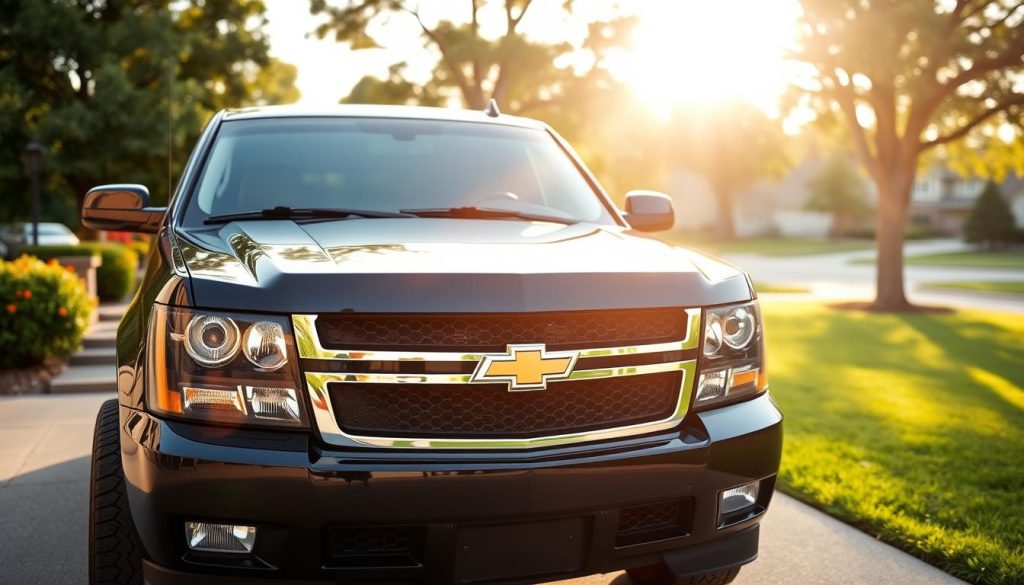
User Reviews and Consumer Reports
When looking at the Chevy Tahoe, we mix insights from user experiences and consumer reports. This gives a full view of how it performs. Chevy Tahoe reviews often praise its strong design and many uses. Families and those who love adventure really like it. People often talk about its great towing ability and roomy inside.
Many consumer reports say some Tahoe models are very reliable. This is especially true for the engine and drivetrain. But, it’s important to know some older models had problems. These include the electrical systems and parts of the transmission.
For a clearer view, here’s what users have said in the last few years:
| Model Year | Positive Feedback | Common Complaints |
|---|---|---|
| 2015 | Smooth ride, spacious interior, powerful engine | Frequent electrical issues |
| 2017 | Advanced safety features, improved fuel efficiency | Transmission problems |
| 2019 | Enhanced performance, luxurious design | Minor infotainment system glitches |
In short, by using both user experiences and chevy tahoe reviews from trusted consumer reports, buyers can choose smarter. This full approach helps find the models with the best value and trustworthiness. It makes owning one more rewarding.
Maintenance Tips for Your Chevy Tahoe
To make sure your Chevy Tahoe stays in top shape, you need to be on it with maintenance. Let’s go over some crucial tips to ensure your vehicle never lets you down.
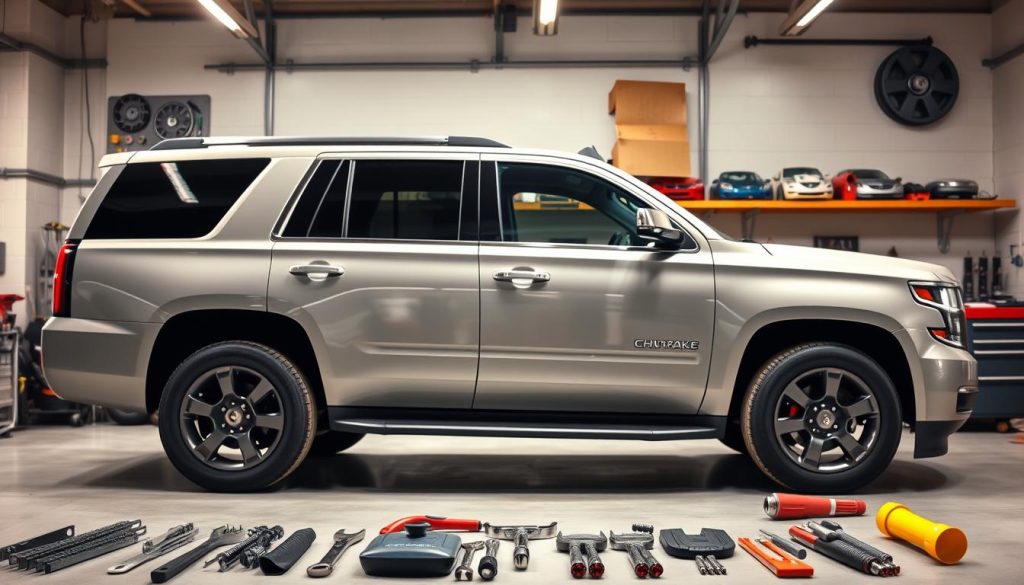
Regular Maintenance Tasks
Keeping up with regular maintenance tasks is key for your Tahoe’s health and performance. Let’s dive into the must-dos:
- Oil Changes: Change the engine oil every 3,000 to 5,000 miles to keep things smooth.
- Tire Rotation: Rotate tires every 6,000 to 8,000 miles for even wear and longer tire life.
- Brake Inspections: Check your brake pads and rotors often. Replace them if they’re worn out.
- Fluid Level Checks: Keep an eye on and refill crucial fluids like coolant and brake fluid.
- Battery Maintenance: Clean battery terminals, secure the battery, and replace it every 3-5 years.
Preventive Measures
Being proactive with your Tahoe’s care can stop big problems before they start. Here are effective strategies to follow:
- Regular Inspections: Get your car checked every six months to spot and fix issues early on.
- Use Quality Parts: Always opt for OEM or similar quality parts for the best compatibility and performance.
- Address Recalls Promptly: Keep up with recalls and have them fixed right away to stay safe and reliable.
- Driving Habits: Drive gently to reduce wear on your engine and transmission parts.
- Shelter Parking: Park in sheltered spaces to protect your Tahoe from bad weather and reduce wear.
By following these maintenance tips and dedicating time to regular check-ups, you’ll greatly improve your Tahoe’s performance and lifespan. Doing so ensures your ride remains dependable for the long haul.
Considerations for Different Uses
The Chevy Tahoe is a flexible SUV that meets various needs. It’s perfect for family road trips and off-roading adventures. This section looks at what to consider for family use, off-road driving, and towing.
Family SUV Requirements
Choosing a Chevy Tahoe for families involves several key factors. Safety tops the list. The Tahoe has strong construction, lots of airbags, and cutting-edge safety tech. This protects everyone inside.
Space is also essential. It fits up to eight passengers and has plenty of room for luggage. Lastly, comfort matters. It comes with premium seats, climate control, and an advanced entertainment system. This makes long trips fun.
Off-Roading and Towing Needs
The Chevy Tahoe shines in off-roading and towing. Its V8 engines deliver the power needed for tough trails and heavy loads. The Auto-Trac 4WD system increases grip on rough terrain. This makes it great for off-road fans.
When it comes to towing, the Tahoe can pull up to 8,600 pounds. It has a trailer brake controller and a rear-view camera. These features make towing easy, blending utility with convenience.
If you’re considering a Chevy Tahoe for families, or for its off-roading and towing abilities, it’s important to know these details. This will help you use the SUV’s features to the fullest in different situations.
Conclusion
When buying an SUV, choosing the right Chevy Tahoe year is crucial. It’s important to know the issues and the best years. This knowledge helps make a good investment.
We’ve looked at changes in manufacturing and reliability, the main problems, and the years to steer clear of. We’ve also given tips on how to pick and care for a used Tahoe. This advice covers everything from family use to off-roading and towing.
Before you make up your mind, go through user reviews and follow maintenance advice. Most importantly, inspect and test drive the cars you’re considering. This will help you feel sure about your choice and enjoy the Tahoe’s known reliability and performance.

